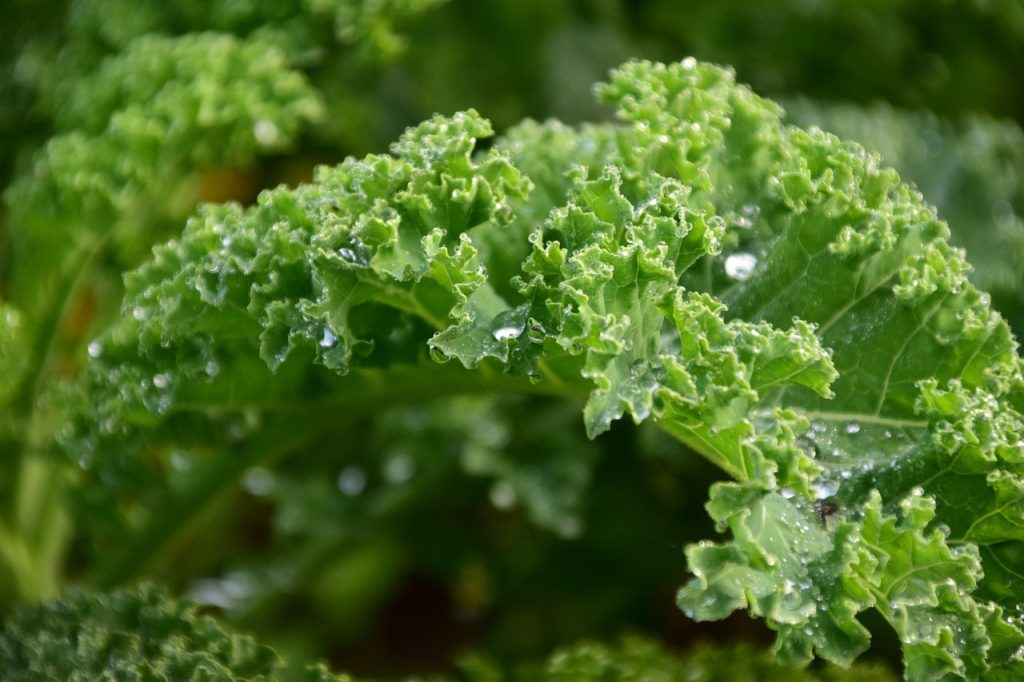All fields are required
Posted in E. coli,Our Blog on April 8, 2024

A recent study out of the University of Illinois Urbana-Champaign investigated certain plants and conditions that make kale and other leafy greens less susceptible to E. coli than other lettuces.
Surprising differences between lettuces and their leafy greens cousins like kale, spinach, and collards make contributed to making them less susceptible to E. coli contamination.
Leafy greens are regularly in the news for outbreaks. E. coli, Salmonella, Listeria, and more! Romaine and green leaf lettuce have the worst reputation. But you don’t hear much about kale. There could be a reason for that.
Five commonly consumed leafy greens were included in this study based on their outbreak frequencies.
Investigators wanted to see how leaf roughness, natural wax coating, or temperature made the leafy greens more or less susceptible to E. coli contamination.
While not expressed in the study literature, selecting the pathogen Escherichia coli (E. coli) makes great sense. Several E. coli outbreaks investigated by the Centers for Disease Control and Prevention (CDC) have been linked to leafy greens. In fact, of the 17 E. coli outbreaks since 2019, five were linked to leafy greens.
Five E. coli outbreaks have been investigated by the CDC since 2019
E. coli, especially Shiga toxin-producing E. coli (STEC) strains such as O157:H7 are potentially deadly.
Symptoms of E. coli infection often involve diarrhea (sometimes bloody), stomach cramps, and vomiting that begins around three to four days after consuming contaminated food or drink. Most people begin to feel better within five to seven days. However, about 5 to 10% of people with STEC infections develop a life-threating complication known as hemolytic uremic syndrome, or HUS.
HUS symptoms usually begin about a week after diarrheal symptoms begin. Just when you are beginning to feel better. People experiencing HUS should be hospitalized because kidneys become compromised and may stop working. HUS symptoms include decreased urination frequency, feeling very tired, and paleness in cheeks and the inside of the eyelids.
Both whole/intact leaves and ones that had been damaged were analyzed.
First, intact leaves were inoculated with the human pathogen, E. coli O157:H7. These samples were analyzed at three different storage temperatures. The first, 4 °C (39 °F), is meant to simulate cold storage conditions. This is close to supply chain transport and refrigerator storage conditions. Next, they selected 20 °C (68 °F) to simulate room temperature conditions. And finally, 37 °C (98.6 °F) was considered for a bit warmer temperature.
Their findings were interesting.
As expected, temperature was a factor in bacterial growth. Lower temperatures help to slow growth of most bacteria. Additional findings, such as roughness and natural wax coating, also played a role in contamination potential.
The study found higher concentrations of E. coli on intact lettuce leaves stored at room temperature conditions and hotter. These E. coli concentrations showed a significant drop when the lettuce was stored under refrigeration conditions.
Refrigerated lettuce was less susceptible to E. coli growth.
The opposite was found in intact kale and collard greens leaves, likely due to the naturally waxy coating found on the produce. For these leafy greens, E. coli bacteria seemed to survive longer when refrigerated.
Leafy greens were more susceptible to E. coli growth.
When researchers performed the same experiment on damaged leaves, both leaf types acted differently.
Cut lettuce leaves release fluid that stimulates bacterial growth. Kale, spinach, and collards produce a juice that shows antimicrobial properties.
Researchers observed the differences in how E. coli bacteria responded to the juices from cut leaves. In the case of lettuces, the fluid stimulated bacterial growth. These juices appear to be feeding the bacteria and helping it grow.
The juice from kale, spinach, and collards showed antimicrobial properties. The compounds excreted in the juice discouraged E. coli growth.
To see if the antimicrobial properties could transfer to other foods, scientists took the juice from kale and collards and put them on lettuce leaf samples.
Eureka!
The same antimicrobial activities were observed. This may lead to commercial applications in the future.
Leaf surface roughness and “epicuticular wax,” or surface wax, showed contributing factors in E. coli growth.
The thick and rough texture of the kale and collard leaves showed additional benefits when it came to E. coli growth.
Bacteria break down the surface of vegetation to release the nutrients they use to grow and thrive on. When it comes to kale and other rough, waxy greens like collards, this hurdle provides a more significant obstacle than what is encountered in lettuces. On top of that, once the surface is damaged, those antimicrobial juices kick into action.
This makes kale, collards, and similar leafy greens less susceptible to E. coli contamination.
We aren’t saying ditch your salad plans for good. However, this study shows some extraordinary properties that kale and collards can add to your plate or smoothie.
The antimicrobial juices paired with strong surfaces and the tendency for these veggies to go through a heat step make them much less susceptible to E. coli contamination.
Overall, kale, collards, and similar leafy greens are a bit safer than lettuces when it comes to microbial growth.
What do you think?
If you’d like to know more about food safety topics in the news, like “Study Finds Kale Less Susceptible to E. coli Than Lettuce!”, check out the Make Food Safe Blog. We regularly update trending topics, foodborne infections in the news, recalls, and more! Stay tuned for quality information to help keep your family safe, while The Lange Law Firm, PLLC strives to Make Food Safe!
By: Heather Van Tassell (contributing writer, non-lawyer)